How to Propagate Aloe Plant
Written by Maggie
Dec 06 2021
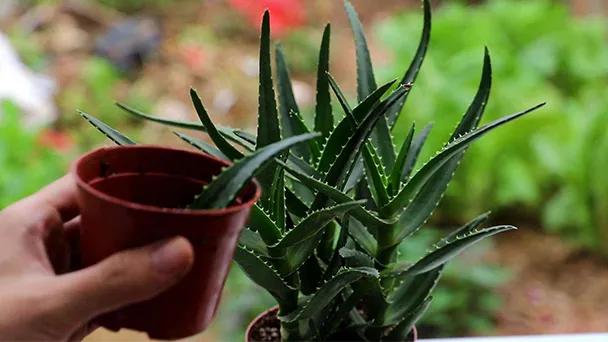
Aloe division and cuttings are commonly used for Aloe propagation. The stems can be broken off and transplanted into new soil for rooting. Alternatively, the seedlings and Aloe mother plants can be separated with a knife to root in place without moving. Alternatively, 8cm long blades can be cut, disinfected, dried and cut into sand and soil, maintained in astigmatic and ventilated places, and rooted by temperature control.
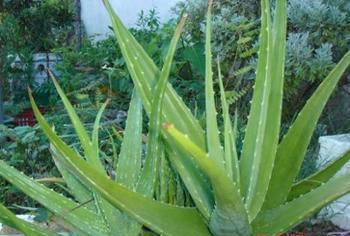
Aloe - Most Common House Plant
Why Should You Propagate Aloe
If aloe is not propagated, it may cause aloe to grab nutrients from each other, resulting in small leaves. Aloe grows very fast. After 2 ~ 3 years, many lateral buds will begin to grow. At this time, we need to transplant aloe in pots. If we don't transplant and divide the pots in time, aloe will be very crowded and give people a very uncomfortable feeling, which will affect our viewing. In addition, because there are too many lateral buds of aloe, it will lack nutrition without changing the soil, resulting in the poor growth of aloe. In addition, aloe is too crowded, which will cause aloe to grow upright and upward, and can not become round. Therefore, we need to transplant aloe in pots.
Necessary Equipment & Materials
- A Healthy Aloe plant
- The Sharp, clean knives or scissors
- A Container with a Drain Hole
- Well-Drained Soil
- Rooting Hormone
Aloe Propagation From Division
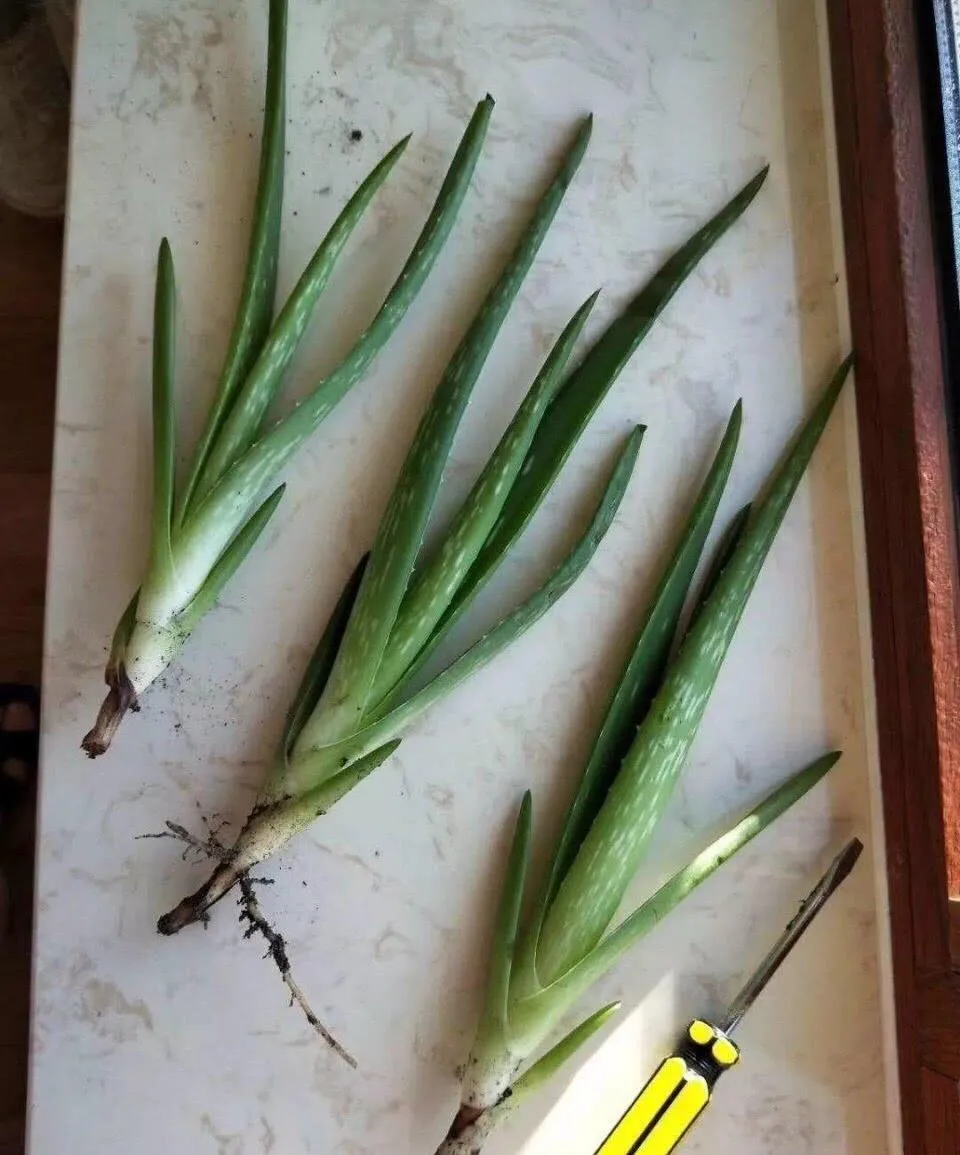
1. Break the stem and reproduce
Aloe can be propagated by simply breaking off the stem by hand, separating it from the original Aloe plant, then disinfecting the wound, drying the wound, planting the Aloe in new soil, curing it, and soon rooting it into the new Aloe.
2. Excision propagation
Aloe excision can also be propagated with sterilized knives that cut the roots to separate the seedlings from the mother plant. No need to take out the seedlings at this time, directly in the original pot soil maintenance, so that it continues to grow, generally in 15 days after the seedlings will take root and survive.

Aloe Propagation By Cutting
1. Blade treatment
Aloe can also be used for cutting propagation. Healthy and strong leaves should be selected from the mother plant and cut off about 8cm in length. The wound should be disinfected with carbapenemi solution to avoid bacterial infection.

2. Cuttage care
Prepare loose and breathable sand soil to make it have good drainage and air permeability, and directly insert the treated blades into sand soil with a depth of about 3cm. After that, the soil was slightly soaked and then placed in the area with sufficient scattered light and good ventilation for curing. The temperature was kept between 25 ℃ and 28℃, so that the soil could take root quickly.
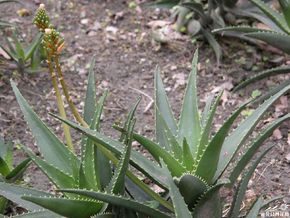
Aloe Propagation Through Water
- Select container
For the container of aloe propagation through water, we can choose a transparent glass bottle, which can observe the growth of roots. It can also be matched with aloe vera, which is more beautiful. The size of hydroponic container is determined by the size of aloe plant, and it does not need to be too large.
- Clean the root
We should select suitable aloe seedlings before aloe hydroponic culture, which should be larger and stronger, and the roots should be developed as much as possible. After taking it out, soak the root of aloe in water and clean it, remove the attached soil and expose the white root. After proper pruning, cut off the small fine roots next to it. After pruning aloe, you can put it in a cool and ventilated place and wait for a period of time to dry.
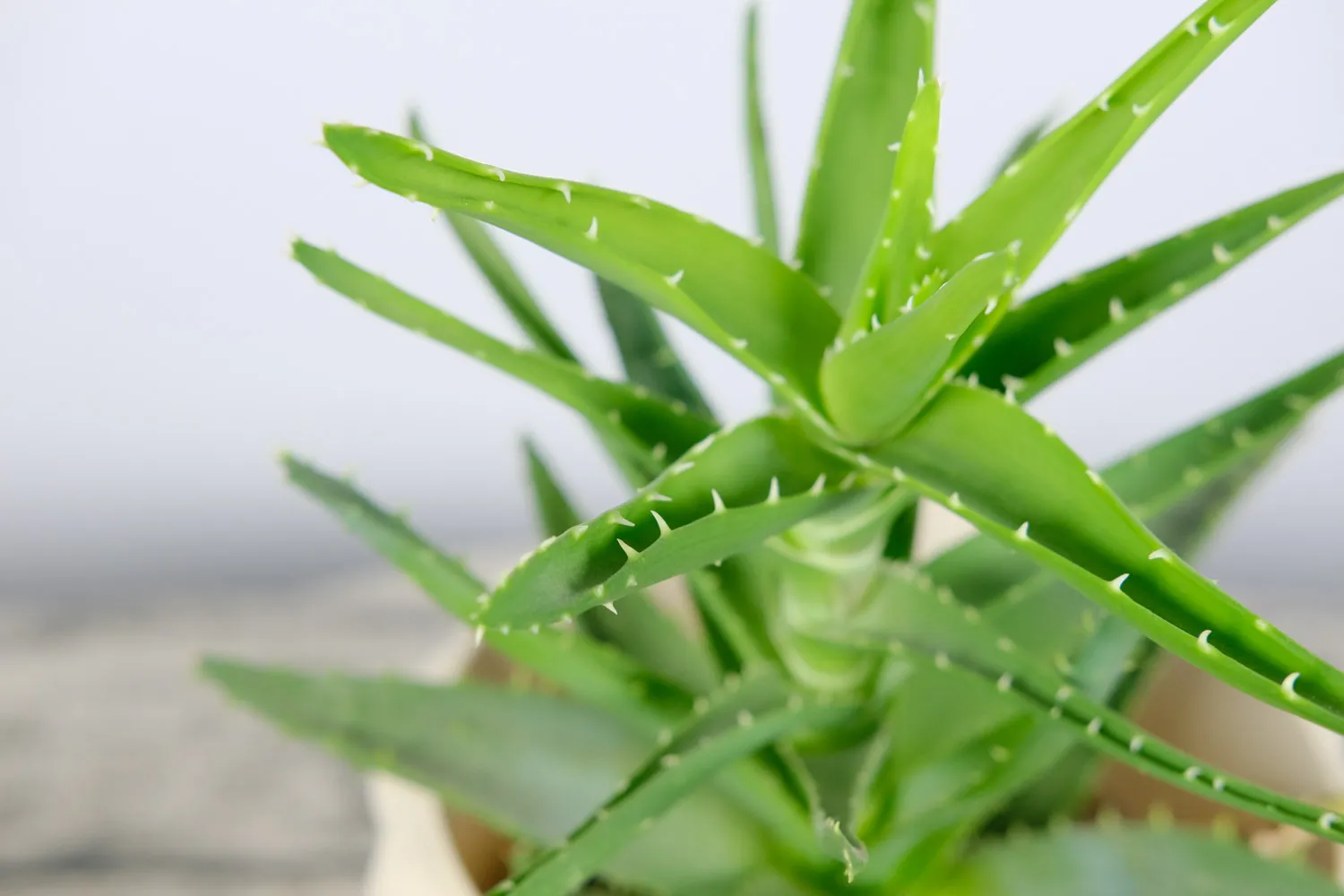
- Hydroponic culture
Tap water can not be directly used for aloe hydroponics. We need to connect the tap water and let it stand for a period of time, so as to ensure that the chlorine in it volatilizes clean. Then add some water and put it into aloe seedlings hydroponics. The water level does not need to be too high, but can contact the root system.
Aloe Propagation By Seed
Aloe vera can hardly pollinate and bear fruit by itself. Due to the unequal size of 14 chromosomes in aloe, the chromosome size separated and combined into a daughter cell appears in a variety of forms. In the process of pollination and fertilization, the gametes formed in this way can not be paired regularly due to different chromosome sizes, resulting in failure of normal pollination and fertilization. Therefore, if there is a high degree of incompatibility, they cannot bear fruit. Although aloe cannot bear seeds by itself, seeds can be harvested after manual treatment. The procedure for propagating aloe with seeds is as follows.
- Sowing time
After harvesting seeds in spring, clean and select seeds, then dry and store them, and sow them in autumn.
- Sowing method
We can use the on-demand sowing method to sow aloe and improve the emergence and seedling rate.
- Substrate and conditions for sowing
The method of aloe propagation by seed is basically the same as cutting. However, after sowing, it should be covered with plastic film to ensure the temperature of the seedbed.
- Seedling management
The time from Aloe sowing to seedling emergence is 1 ~ 2 months. After emergence, strengthen water and fertilizer management. The principle is: moisture is dry and wet in the seedbed. Apply fertilizer less and more frequently. Such as 0.1% potassium dihydrogen phosphate or 800 times Auple.
Aloe Propagation Post Care
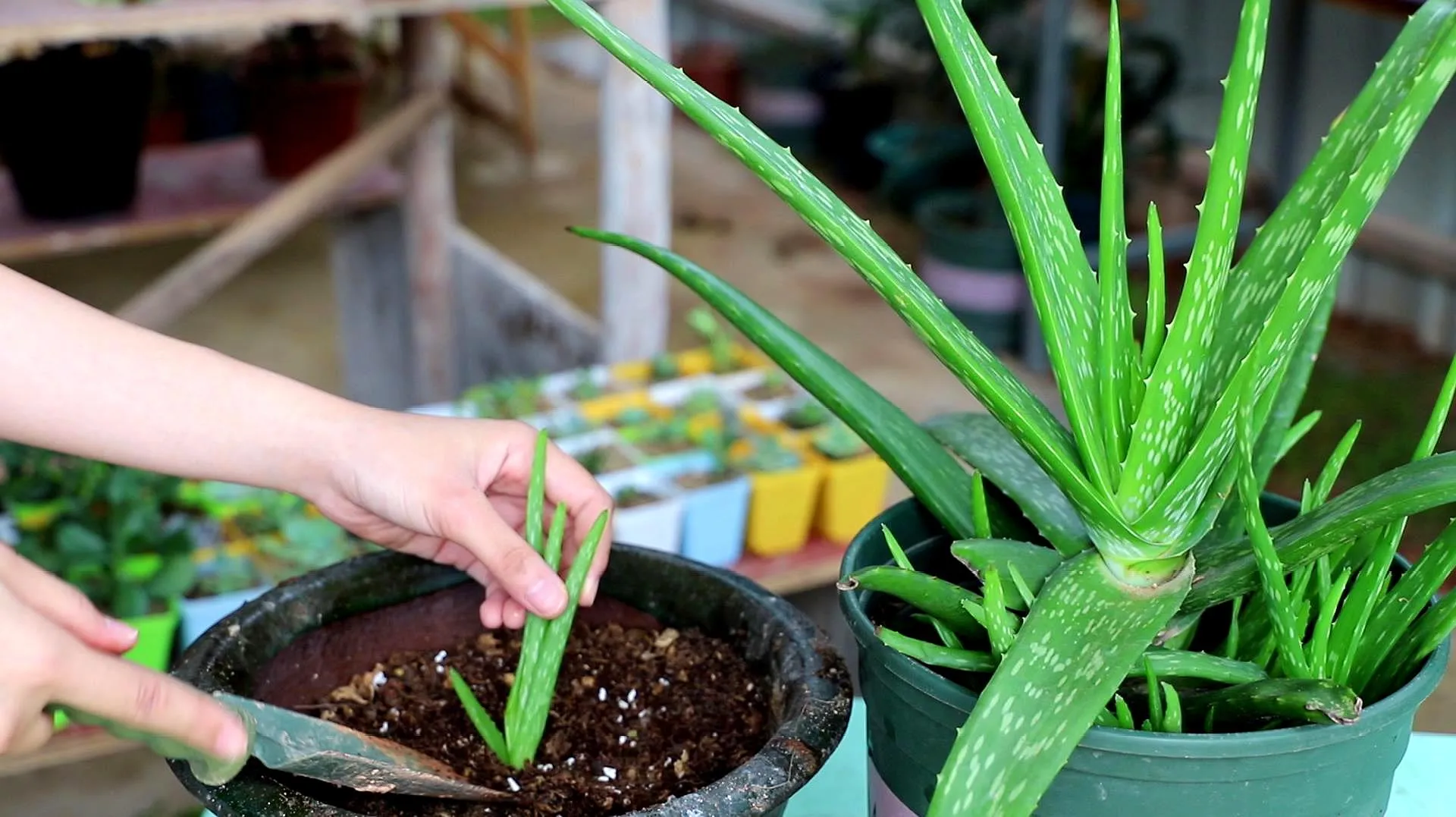
Light
Light intensity directly affects the photosynthesis and morphological characteristics of aloe. Under strong light, aloe plants grow strong, leaves are plump, leaves are dark green, and plants are strong; Insufficient light shows that the plant is thin and weak, the leaves are thin and tender, the mesophyll is not full, and the leaf color is light. Aloe has strong adaptability to light, can grow in strong light and can also adapt to slightly shaded conditions, but good growth requires sufficient light. Under the hot summer sun, the light intensity far exceeds the light saturation point of aloe. Excess light will only increase the consumption and transpiration load of plants and increase the leaf temperature. Therefore, appropriate shade should be provided to promote the growth of aloe.
Temperature
Aloe Vera is afraid of cold. The temperature during breeding cannot be too low. The most suitable temperature for its growth is about 15-25 ℃. When the temperature rises rapidly, more ventilation and water replenishment are needed to reduce the temperature. In winter, we should pay more attention to keeping out of the cold and try to adjust the temperature to 5 ℃, otherwise, it will stop growing temporarily. The lowest temperature should not be lower than 0 ℃, otherwise, it will be frostbitten.
Fertilizer
In the process of aloe growth, the nutrients in the basin soil alone can not support the growth. Although it can grow normally without fertilizer, it can grow better with appropriate fertilizer. Spring and autumn are the time when it grows most vigorously. At this time, the addition effect is the best. Thin can be applied every 15 days. We can use ordinary compound fertilizer plus plant ash, or special water-soluble fertilizer to promote rooting.
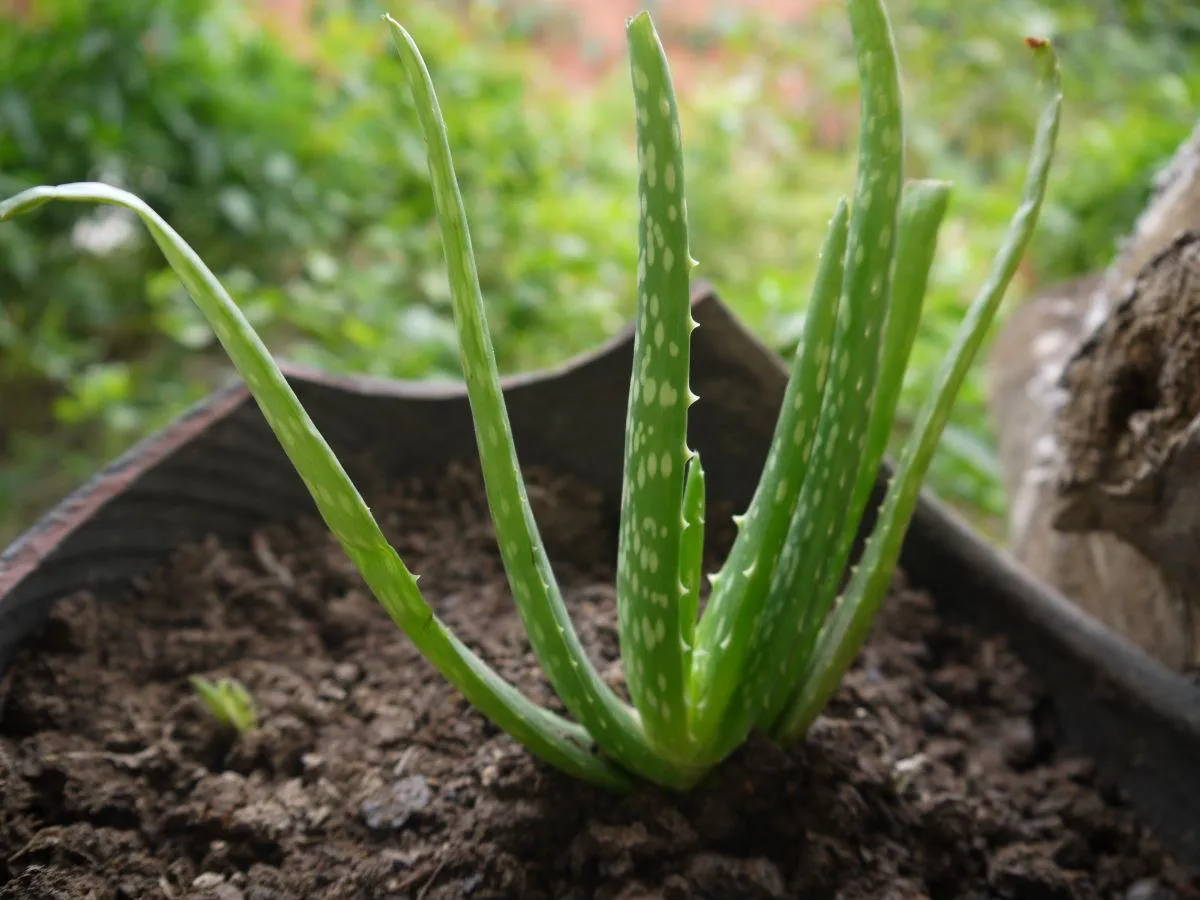
Water
We need to pay great attention to watering aloe, because we can't water it too often or not in time. In spring, the temperature rises slowly and the evaporation rate of water increases gradually. At this time, we should water it once a week. Sufficient water shall be ensured for each watering, but water shall not be stored. In summer, when the temperature is the highest, we should also water more accordingly, twice a week. Autumn is almost the same as summer. We can water aloe in the same way. In winter, the temperature is low and the loss is less. At this time, water can be poured once every two weeks. The most important thing is to make self-judgment according to the humidity of the soil. When the soil is dry, you can water aloe.
Read More:
Latest Updated
- Benefits of Bugleweed - 7 Science-backed Health Benefits
- Bugleweed Dangers & Side Effects - Is It Poisonous?
- How to Plant Evergreen Trees - What You Should Know
- When to Plant Evergreens - Grow Guide for Evergreen Trees
- 12 Wonderful Evergreen Shrubs for Your Garden
- 12 Popular Evergreen Plants with Pictures for Beginners
- When And How To Prune A Lilac Bush Like a Pro
- How to Grow & Care for Lilac Vine (Hardenbergia Violacea)
- Japanese Lilac Tree (Syringa Reticulata) Care & Propagation Guide
- Shumard Oak Pros and Cons - What to Know
Popular Articles
- Winter maintenance of Antirrhinum Majus
- How to Grow Terminalia Mantaly Tree
- How to Grow and Care for Crossostephium Chinense
- How to grow Antirrhinum Majus in spring
- Peristeria Elata (Dove Orchid) Profile: Info & Care Guide
- Underwatered Snake Plant (Sansevieria Trifasciata) - Signs And How To Fix
- How to Care for Brazilian Jasmine Plant (Mandevilla Sanderi)
- How to Grow & Care for Graptopetalum Purple Delight in Summer
- Rosa Chinensis (China Rose): Plant Growing & Care Tips
- How to Care for Baby Sun Rose (Aptenia Cordifolia)